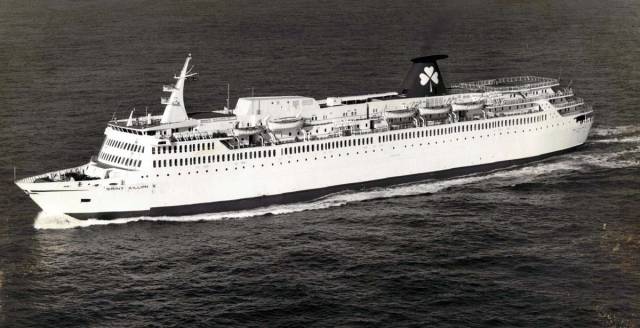#LeHavre500 - Festivities began earlier today and will continue for five months in celebrating the 500th anniversary of Le Havre, a UNESCO-listed city that is also France's fifth largest port, writes Jehan Ashmore.
The port of Le Havre at the mouth of the Seine was founded in 1517 by King Francis I. In recognition of this historic milestone, events are to take place throughout Normandy’s largest city. This will involve the port's historic docks, boat races, the beach and shopping district, art exhibitions, street parades and theatrical performances.
Le Havre is also an English Channel ferryport in which Brittany Ferries sail from the UK using Portsmouth. Those travelling from Ireland can travel from Rosslare albeit not directly as sailings run to Cherbourg. On the Rosslare-Cherboourg route two operators compete, Stena Line and Irish Ferries, the latter having operated the last direct ferry routes connecting Ireland to Le Havre until closure took place two decades ago.
The continental routes were Rosslare-Le Havre, that took 21 hours and Cork-Le Havre. This unique link connecting Munster and Normandy was slightly longer at 21 hours 30 minutes. Historically, this passage time remains the longest of any car-ferry service operating to and from Ireland. The routes were operated by Saint Killian II having been 'stretched' in 1982 and Saint Patrick II. They both dated to 1973 and were built originally to serve Scandinavian operators, Stena Line and Viking Line respectively.
Irish Ferries currently also operate a seasonal-only Rosslare-Roscoff service to Brittany which resumed service earlier this month. An alternative route is Brittany Ferries Cork-Roscoff service that has a longer season sailing extending to early November.
Despite the closure of the former Le Havre services, only last month, Neptune Lines began a new weekly scheduled vehicle-only carrier operation connecting the French port to Rosslare. The service transports imported Renault and Peugeot vehicles as part of a ‘liner’ service with calls connecting Santander, Le Havre, Southampton and before finally reaching Rosslare Europort. The calls to the Wexford port are on Saturday mornings and departures take place in the afternoon.
This evening Neptune Dynamis having departed Rosslare is bound for Santander. Astern of the vehicle-carrier are both Cherbourg bound rival ferries, Stena Horizon and Oscar Wilde. At time of writing they were abreast of each other in the Celtic Sea.
It is almost a decade ago since an Irish-L Havre service was operating. Then it was the case of French shipping giant Louis Dreyfus Armateurs. This saw LDA through ferry subsidiary, LD Lines began linking Le Havre and Rosslare in November 2008 with ropax, Norman Voyager. They squeezed in at the weekends a Le Havre-Rosslare round trip in between weekday Le Havre-Portsmouth sailings.
Both routes were short-lived as Norman Voyager was chartered in September 2009 to successor, Celtic Link Ferries. The Wexford based Celtic Link continued the Rosslare-Cherbourg in direct competition with Irish Ferries. Main rivals Stena Line took over having acquired CLF operations in the Spring of 2014.
The closure of LD Lines service to Ireland was not entirely the end as the French operator returned to Rosslare in January 2014. They launched a new Ireland-France-Spain service, that was historic albeit providing an in-direct Irish-Iberian link. The 'landbridge' service connected Rosslare, St. Nazaire and Gijon.
Once again the LD relationship on the Irish connection proved to be a short and sporadic existance. The ropax Norman Atlantic was pulled surprisingly off service in advance of the high season. The ropax did resume crossings that summer but they only ran until up to late August having suspended September sailings.






























































